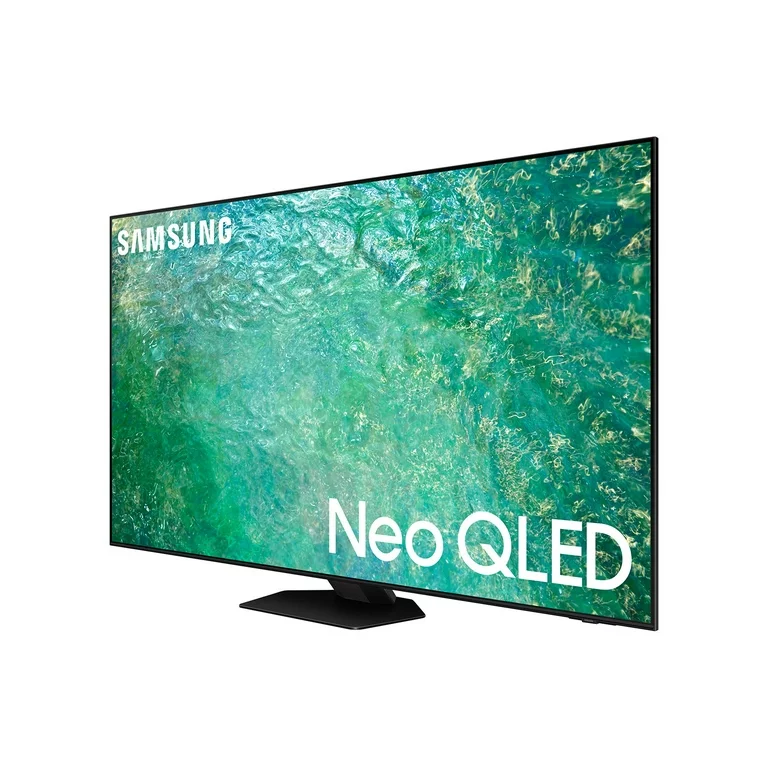Samsung 65″ QN85C Neo QLED 4K Smart TV
Out of stock

රු750,000.00 රු880,000.00
Out of stock
Compare






| Weight | 30 kg |
|---|---|
| Product | QLED |
| Series | 8 |
| Display | Screen Size Refresh Rate Resolution |
| Video | Picture Engine One Billion Color HDR (High Dynamic Range) HDR 10+ AI Upscale HLG (Hybrid Log Gamma) Contrast Color Viewing Angle Micro Dimming Contrast Enhancer Film Mode Motion Technology Picture Clarity Expert Calibration Smart Calibration |
| Audio | Dolby Atmos Active Voice Amplifier Adaptive Sound Object Tracking Sound Q-Symphony Audio Pre-selection Descriptor Sound Output (RMS) Speaker Type Woofer Multiroom Link Bluetooth Audio Dual Audio Support (Bluetooth) Buds Auto Switch |
| Smart Service | Operating System Bixby Far-Field Voice Interaction Built-in Voice Assistant TV Plus Web Browser Works with AI Speaker SmartThings Universal Browse & Play Media Home |
| Smart Feature | Multi Device Experience NFC on TV Mobile Tap Mirroring Video Communication Multi-View Sound Wall Mobile Camera Support Easy Setup App Casting Chat Togethter Ambient Mode Wireless Dex Web Service Virtual Communication NFT Telemedicine ScreenVitals |
| Game Feature | Auto Game Mode (ALLM) Game Motion Plus Dynamic Black EQ Surround Sound Super Ultra Wide Game View Mini Map Zoom Freesync G-SYNC Light-sync HGiG Gaming Hub |
| Tuner/Broadcasting | Digital Broadcasting Analog Tuner CI (Common Interface) |
| Connectivity | HDMI USB HDMI (High Frame Rate) Component In (Y/Pb/Pr) USB-C (Camera Only) Ethernet (LAN) POGO (SlimFit Cam Only) Audio Out (Mini Jack) Digital Audio Out (Optical) RF In (Terrestrial / Cable input) Ex-Link ( RS-232C ) CI Slot Wireless LAN Built-in Bluetooth Anynet+ (HDMI-CEC) HDMI Audio Return Channel |
| Design | Design Bezel Type Slim Type Front Colour Stand Type Stand Color |
| Additional Feature | Auto Rotation 9:16 Screen Support Décor Mode Motion Detection (Frame) Knox Vault Ambient Mode Brightness/Color Sensor Caption (Subtitle) EPG ConnectShare™ Extended PVR OSD Language Teletext (TTX) Time Shift One Connect Box V-Chip MBR Support |
| Accessibility | Accessibillity – Voice Guide Accessibility – Learn TV Remote / Learn Menu Screen Low Vision Support Hearing Impaired Support Motor Impaired Support |
| Power & Eco Solution | Eco Sensor Power Supply Power Consumption (Max) Energy Efficiency Class Power Consumption (Stand-by) Power Consumption (Typical) Yearly Power Consumption (EU standard) Auto Power Off Auto Power Saving |
| Dimension | Package Size (WxHxD) Set Size with Stand (WxHxD) Set Size without Stand (WxHxD) Stand (Basic) (WxD) VESA Spec |
| Weight | Package Weight Set Weight with Stand Set Weight without Stand |
| Accessory | Remote Controller Model Batteries (for Remote Control) Slim Fit Wall-mount Support Optional Stand Support (Y20 Studio) Optional One Connect Cable Support Vesa Wall Mount Support Customizable Bezel Support Auto-Rotation Accessory Support User Manual Full Motion Slim Wall Mount (Y22) E-Manual Webcam Support ANT-Cable Zigbee / Thread Module Power Cable HDMI Cable Slim Gender Cable |
Brand
Samsung
Samsung first entered the electronics industry in 1969 with several electronics-focused divisions. Their first products were black-and-white televisions. During the 1970s the company began to export home electronics products overseas. At that time Samsung was already a major manufacturer in Korea, and it had acquired a 50 percent stake in Korea Semiconductor.
The late 1970s and early ’80s witnessed the rapid expansion of Samsung’s technology businesses. Separate semiconductor and electronics branches were established, and in 1978 an aerospace division was created. Samsung Data Systems (now Samsung SDS) was established in 1985 to serve businesses’ growing need for systems development. That helped Samsung quickly become a leader in information technology services. Samsung also created two research and development institutes that broadened the company’s technology line into electronics, semiconductors, high-polymer chemicals, genetic engineering tools, telecommunications, aerospace, and nanotechnology.
Samsung was founded as a grocery trading store on March 1, 1938, by Lee Byung-Chull. He started his business in Taegu, Korea, trading noodles and other goods produced in and around the city and exporting them to China and its provinces. (The company name, Samsung, came from the Korean for “three stars.”) After the Korean War, Lee expanded his business into textiles and opened the largest woolen mill in Korea. He focused heavily on industrialization with the goal of helping his country redevelop itself after the war. During that period his business benefited from the new protectionist policies adopted by the Korean government, whose aim was to help large domestic conglomerates (chaebol) by shielding them from competition and providing them easy financing. In the late 1950s the company acquired three of Korea’s largest commercial banks as well as an insurance company and firms that made cement and fertilizer. Samsung in the 1960s acquired more insurance companies as well as an oil refinery, a nylon company, and a department store.

Based on 0 reviews
Be the first to review “Samsung 65″ QN85C Neo QLED 4K Smart TV”
You must be logged in to post a review.










There are no reviews yet.